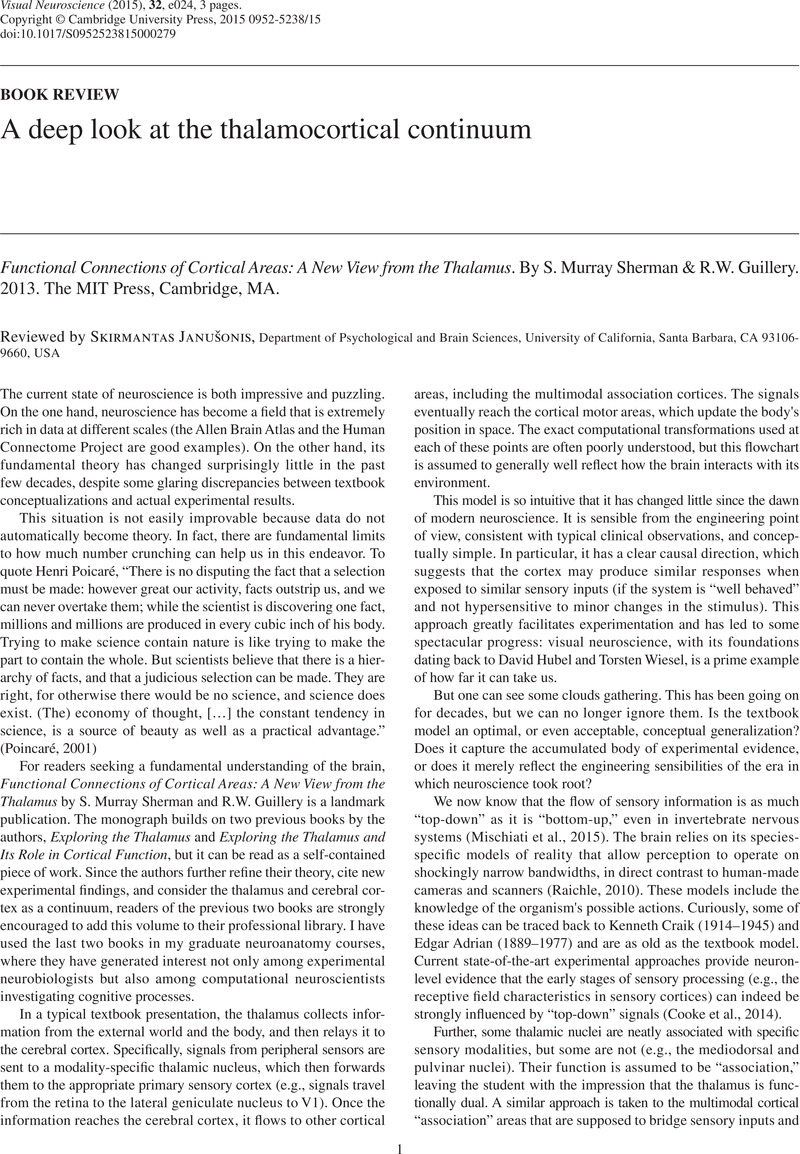No CrossRef data available.
Article contents
A deep look at the thalamocortical continuum - Functional Connections of Cortical Areas: A New View from the Thalamus. By S. Murray Sherman & R.W. Guillery. 2013. The MIT Press, Cambridge, MA.
Review products
Functional Connections of Cortical Areas: A New View from the Thalamus. By S. Murray Sherman & R.W. Guillery. 2013. The MIT Press, Cambridge, MA.
Published online by Cambridge University Press: 10 September 2015
Abstract
An abstract is not available for this content so a preview has been provided. Please use the Get access link above for information on how to access this content.

Information
- Type
- Book Review
- Information
- Copyright
- Copyright © Cambridge University Press 2015
References
Burr, D.C., Ross, J., Binda, P. & Morrone, M.C. (2010). Saccades compress space, time and number. Trends in Cognitive Sciences 14, 528–533.CrossRefGoogle ScholarPubMed
Cooke, D.F., Goldring, A.B., Baldwin, M.K.L., Recanzone, G.H., Chen, A., Pan, T., Simon, S.I. & Krubitzer, L. (2014). Reversible deactivation of higher-order posterior parietal areas. I. Alterations of receptive field characteristics in early stages of neocortical processing. Journal of Neurophysiology 112, 2529–2544.CrossRefGoogle Scholar
Menon, V. (2011). Large-scale brain networks and psychopathology: A unifying triple network model. Trends in Cognitive Sciences 15, 483–506.CrossRefGoogle ScholarPubMed
Mischiati, M., Lin, H.T., Herold, P., Imler, E., Olberg, R. & Leonardo, A. (2015). Internal models direct dragonfly interception steering. Nature 517, 333–338.CrossRefGoogle ScholarPubMed
Poincaré, H. (2001). The Value of Science: Essential Writings of Henri Poicaré. New York: The Modern Library, pp. 364–369.Google Scholar
Raichle, M.E. (2010). Two views of brain function. Trends in Cognitive Sciences 14, 180–190.CrossRefGoogle ScholarPubMed

